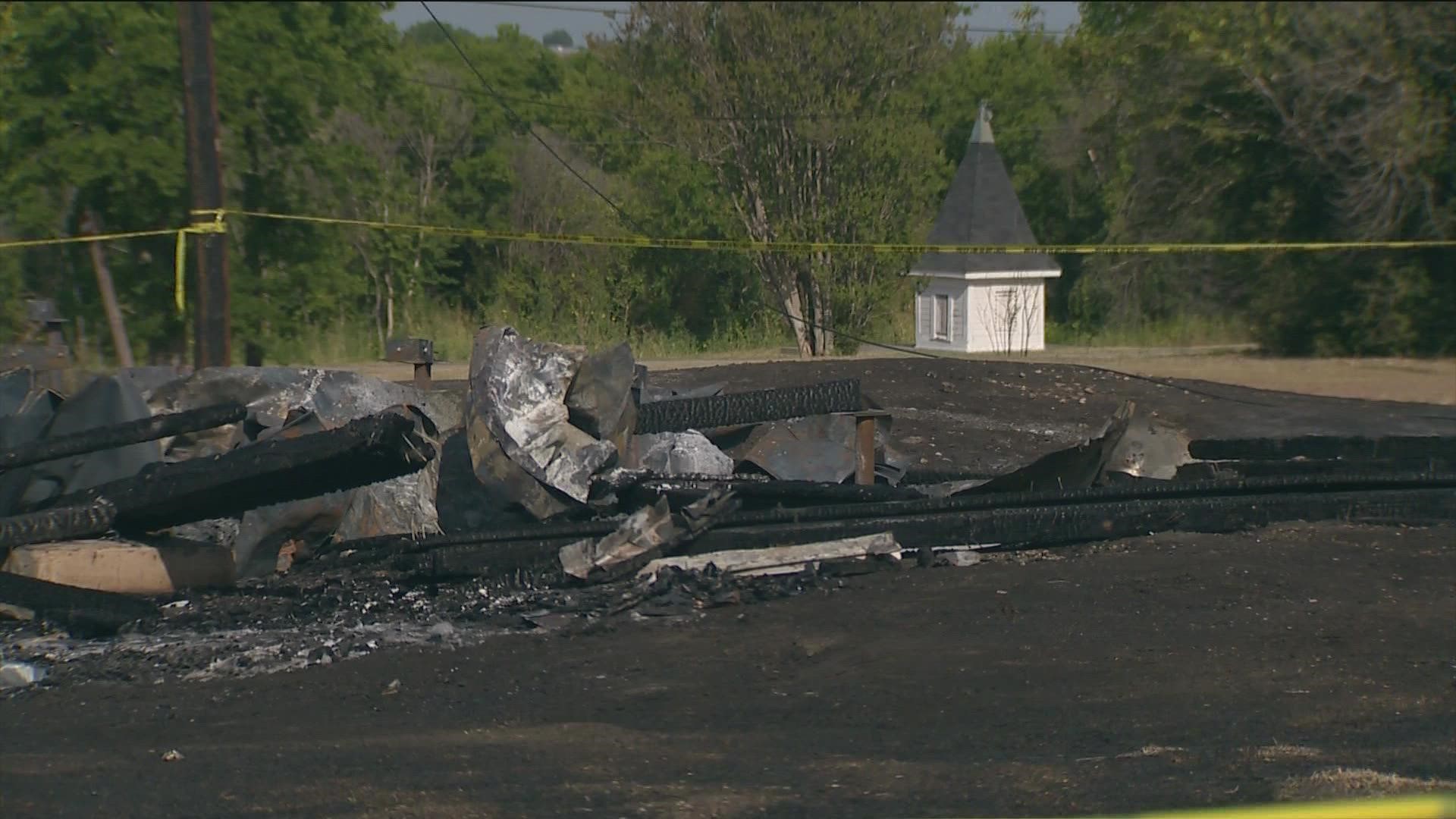TAYLOR, Texas — A historic landmark in the City of Taylor burned to the ground early Sunday morning, according to the City.
Fire officials responded to the historic home of Dr. James Lee Dickey, an early Taylor physician and civil rights pioneer, in the 500 block of Burkett Street shortly before 3:45 a.m. on July 10 after receiving reports of the fire around 3:30 a.m.
Crews arrived on the scene and found the home engulfed in flames. Fire crews from Taylor, Round Rock, the Hutto ESD, ESD 10 and the Avery Pickett Volunteer Fire Department attempted to contain the fire, but the structure burned to the ground. The fire was extinguished around 4:45 a.m. Firefighters also put out a small grass fire that started as a result of the structure fire.
State Fire Marshal detectives and Taylor Police Department detectives were called in to assist with the investigation. Although the fire marshal did not initially find evidence that accelerants were used, police consider the incident to be suspicious, the City said. An investigation into the fire is ongoing.
RELATED: 'It didn't destroy the history': Community undeterred after fire destroys historic home in Taylor
On July 12, officials said they have arrested James Paul Gogolewski Jr., 47, of Taylor in connection with the fire. Based on initial investigation, officials believe he intentionally set the fire with intent to destroy the home and museum.
According to court documents, a Taylor police officer was on their way to check on Gogolewski's welfare on June 30 when they came across another structure fire. That investigation was turned over to the Taylor Fire Department.
Later, on July 9, officers were dispatched to the Gogolewski residence after his mother reported that he had left the home with a can of butane fuel. Officials were unable to locate him until later that night, but they again lost sight of him.
On the day of the fire, police said Gogolewski was located about a block away. Upon contact with him, officers said he was acting strangely. They said he had a torch lighter in his pocket. However, he was released.
Officials also spoke with his father, who said he gave his son a ride on the day of the fire, noting that he smelled like smoke. He was asked to drive Gogolewski to retrieve his things. He observed that Gogolewski's items – some articles of clothing and a number of rocks – were located in a wooded area near the museum.
As they passed by the museum, his father asked his son if he burned it down, to which he said he replied, "Yes, it was a Pagan church and I had to burn it down."
“It is heartbreaking to lose this important part of Taylor history. But Dr. Dickey’s legacy was far more than the physical structure of his former residence. The City of Taylor and the community at large will continue to pursue opportunities to honor his memory and further his life’s work of being a champion for health, wellness, education and civil rights," Taylor Mayor Brandt Rydell said. "I would like to extend my gratitude to the firefighters at the Taylor Fire Department and our neighboring communities for their work in extinguishing the flames and keeping the fire from spreading. I also want to acknowledge the Taylor Police Department, which we will continue to support throughout the investigation.”
Dr. Dickey was a physician, humanitarian, civil rights advocate and resident of Taylor. He died in 1959. He was the only Black doctor in the City when he settled in Taylor after serving in World War I. His legacy includes improving the local water supply and leading a community effort against an outbreak of typhoid fever in 1932 and 1933.
Dr. Dickey also worked to help pass school bonds and improvements and led efforts for local recreational facilities and federal housing. He was a founder of the Taylor Negro Chamber of Commerce and served as a trustee of Huston-Tillotson College.
His home was listed on the National Register of Historic Places on Feb. 21, 2017.
PEOPLE ARE ALSO READING:

